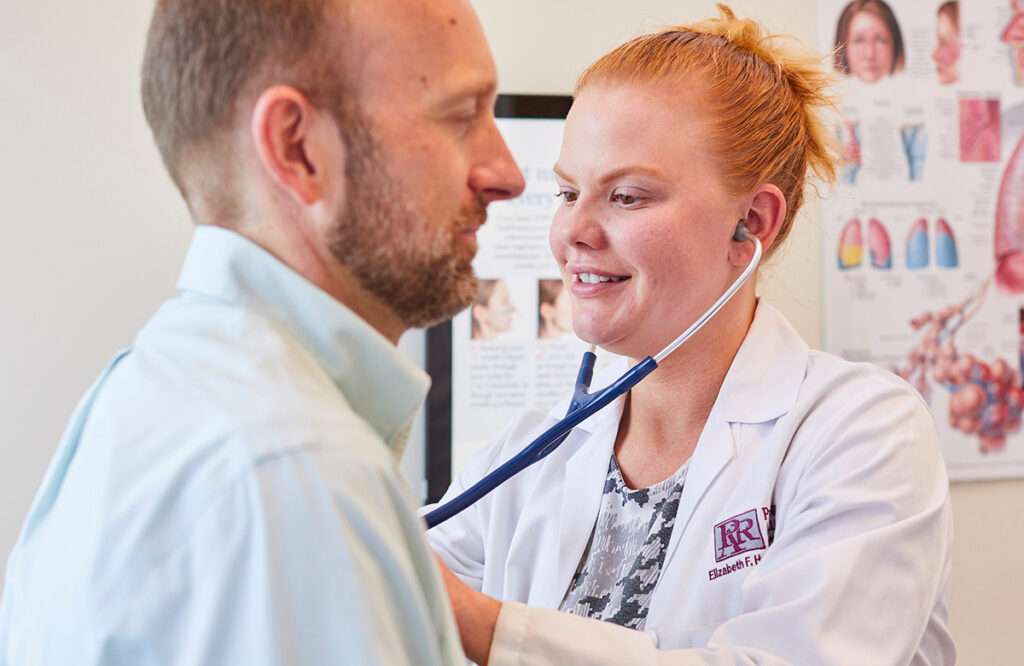What is Pulmonary Hypertension?
Pulmonary hypertension (PH) is a serious medical condition that causes abnormally high blood pressure in the arteries that go between the heart and lungs. (It is not the same as having regular high blood pressure that is measured with a blood pressure cuff.) The condition affects the way the heart pushes blood into the lungs. An elevated blood pressure in the arteries of the lungs damages the smaller vessels and capillaries in your lungs making it harder for blood to flow through them. As the heart works harder to push the blood through the lungs, it eventually becomes weak, which can result in heart failure.
Pulmonary Associates of Richmond are lung specialists and highly trained in diagnosing and treating PH. Once your doctor identifies the cause of your pulmonary hypertension, he or she can develop a treatment plan that is right for your specific type.
TYPES OF PULMONARY HYPERTENSION
- Pulmonary arterial hypertension (PAH)
- Pulmonary hypertension due to left-sided heart disease (left heart failure, valve disease)
- Pulmonary hypertension due to lung diseases such as pulmonary fibrosis/interstitial lung disease, chronic high altitude exposure and obstructive sleep apnea
- Chronic thromboembolic pulmonary hypertension (CTEPH) caused by blood clots in the lungs blocking blood flow
- PH caused by other potential metabolic, systemic or hematologic disorders
CAUSES OF PH
Sometimes, doctors cannot find a reason for the disorder, and this is called idiopathic pulmonary hypertension. Genetics may contribute to the development of this lung condition. Other health conditions can cause the issue, such as:
- Congestive heart failure
- Blood clots in the lungs
- Illegal drug use
- Cirrhosis of the liver and other liver diseases
- Autoimmune disorders like lupus, scleroderma and rheumatoid arthritis
- Lung diseases such as emphysema, chronic bronchitis or pulmonary fibrosis
- Sleep apnea
SYMPTOMS OF PH
Symptoms often come on slowly with the most common symptoms being shortness of breath with activity. You may notice that you feel winded after exercising or working in the yard. Some other symptoms include:
- Chest pain
- Fatigue
- Dizziness
- Heart palpitations
- Light-headedness or fainting
- Swelling in your ankles and legs
DIAGNOSING PULMONARY HYPERTENSION
Diagnosing the condition can be difficult as many of the symptoms are the same as the symptoms associated with other lung conditions such as COPD or interstitial lung disease. To be able to make an accurate diagnosis, patients must undergo a series of tests that will help distinguish PH as the cause of the symptoms the patient is experiencing. Some preliminary testing will include:
- Blood tests
- Chest x-ray
- Electrocardiogram
- Pulmonary function testing
- Exercise tolerance test (six minute walk test)
The non-invasive test that often provides enough data for a preliminary diagnosis of PH is an echocardiogram. An echocardiogram is an ultrasound of the heart that estimates the pressures in the right side of the heart as well as assesses the heart function. If the condition is suspected, further testing will be required to make a definitive diagnosis.
TREATMENT FOR PULMONARY HYPERTENSION
Treatment options will vary depending on the severity of your PH. Each person is unique and after your diagnosis, your doctor will help you choose a treatment option that is best for you. First, your doctor will treat the cause of the pulmonary hypertension. The conventional medical therapies are:
- Calcium channel blockers which help decrease blood pressure
- Digoxin assists in the pumping of the heart
- Diuretics help rid the body of excess fluid that puts pressure on the heart
- Oxygen therapy helps patients feel better and helps to alleviate the symptoms of shortness of breath making it easier to stay active
- Warfarin thins the blood and helps prevent blood clots
There are other oral medications that can be used to treat pulmonary hypertension by helping the blood vessels in the lungs to relax and working to prevent narrowing of blood vessels.
Inhaled medications can help relieve the symptoms of breathlessness and intravenous treatment options are used to open up the blood vessels improving blood flow and easing the symptoms of chest pain as well as shortness of breath.
New medications and treatments are being studied and produced through clinical trials and you can consult your doctor to see if there is a study that may be right for you.
The goal of treatment therapies is to reduce your symptoms of shortness of breath, treating the underlying cause, and improving your quality of life. While undergoing treatment, your doctor will schedule regular office visits to make sure your treatment is working for you.


